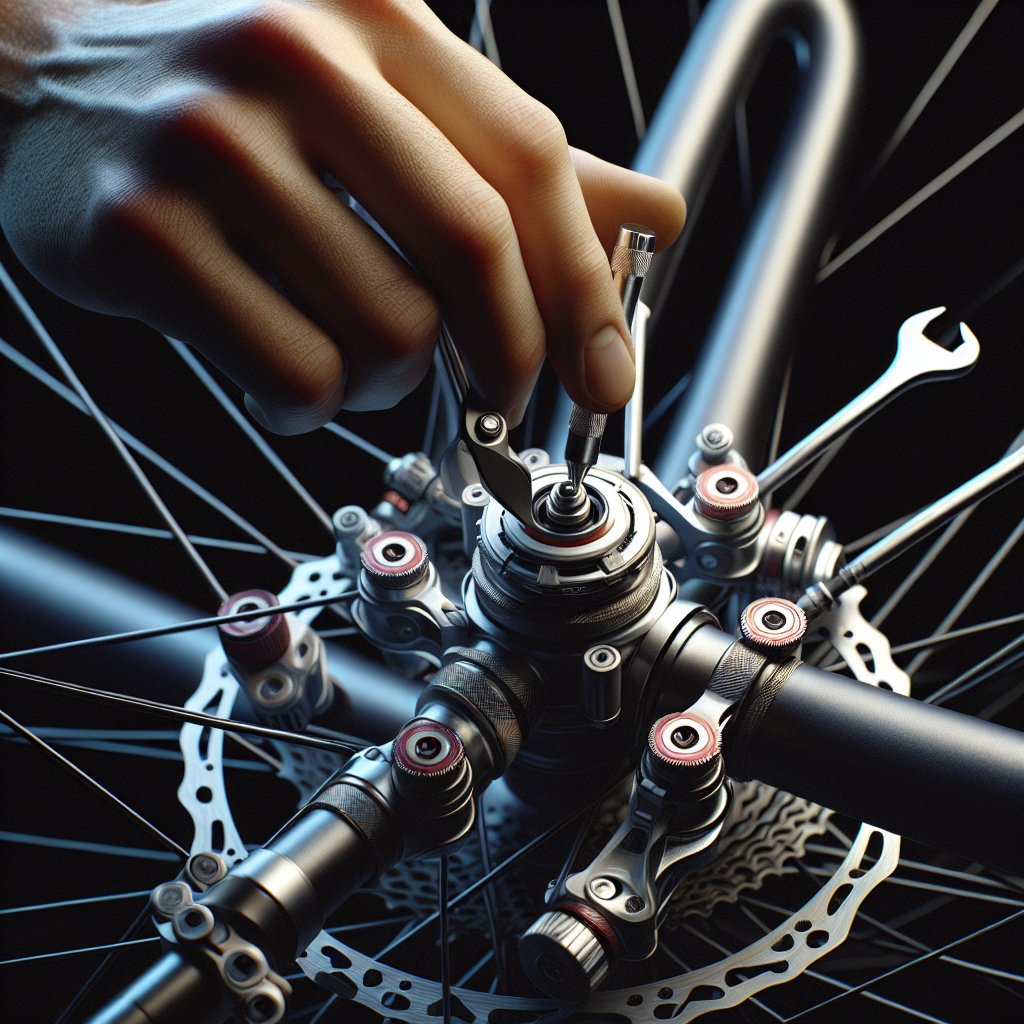Adjusting your bicycle’s headset and steering is crucial for ensuring a smooth and safe ride. A properly adjusted headset can prevent wobbling, improve handling, and extend the life of your bike. This article will guide you through the steps to adjust your bicycle’s headset and steering, ensuring you can ride with confidence and comfort.
Understanding the Bicycle Headset
The headset is a set of components that connect the bicycle fork to the frame, allowing the fork to rotate and thus enabling steering. It consists of bearings, cups, and a steerer tube. There are two main types of headsets: threaded and threadless. Understanding the type of headset on your bike is the first step in making the necessary adjustments.
Threaded Headsets
Threaded headsets are commonly found on older bicycles and some modern touring bikes. They consist of a threaded steerer tube and a set of locknuts that secure the bearings in place. Adjusting a threaded headset involves loosening the locknut, adjusting the bearing preload, and then retightening the locknut.
Threadless Headsets
Threadless headsets are more common on modern bicycles. They use a smooth steerer tube and a stem that clamps onto the tube. The bearing preload is adjusted using a top cap and bolt, while the stem bolts secure the stem in place. Adjusting a threadless headset is generally simpler than adjusting a threaded one.
Tools You Will Need
Before you begin adjusting your headset, gather the necessary tools. These may include:
- Allen wrenches (typically 4mm, 5mm, and 6mm)
- Adjustable wrench or headset wrench (for threaded headsets)
- Grease
- Torque wrench (optional but recommended)
- Rag or paper towels
Adjusting a Threaded Headset
Follow these steps to adjust a threaded headset:
Step 1: Loosen the Locknut
Use an adjustable wrench or a headset wrench to loosen the locknut on the top of the headset. This will allow you to adjust the bearing preload.
Step 2: Adjust the Bearing Preload
Turn the adjusting cup (located below the locknut) clockwise to increase the preload or counterclockwise to decrease it. The goal is to eliminate any play in the headset while ensuring the steering remains smooth.
Step 3: Tighten the Locknut
Once the preload is set, hold the adjusting cup in place and tighten the locknut. Be careful not to overtighten, as this can damage the bearings.
Step 4: Test the Adjustment
Check for any play by applying the front brake and rocking the bike back and forth. If you feel any movement, repeat the adjustment process. Ensure the steering is smooth and free of resistance.
Adjusting a Threadless Headset
Follow these steps to adjust a threadless headset:
Step 1: Loosen the Stem Bolts
Use an Allen wrench to loosen the bolts on the side of the stem. This will allow you to adjust the bearing preload using the top cap bolt.
Step 2: Adjust the Bearing Preload
Turn the top cap bolt clockwise to increase the preload or counterclockwise to decrease it. The goal is to eliminate any play in the headset while ensuring the steering remains smooth.
Step 3: Tighten the Stem Bolts
Once the preload is set, tighten the stem bolts evenly. Use a torque wrench if available to ensure the bolts are tightened to the manufacturer’s specifications.
Step 4: Test the Adjustment
Check for any play by applying the front brake and rocking the bike back and forth. If you feel any movement, repeat the adjustment process. Ensure the steering is smooth and free of resistance.
Common Issues and Troubleshooting
Even with careful adjustments, you may encounter some common issues. Here are a few troubleshooting tips:
Issue: Persistent Play in the Headset
If you continue to feel play in the headset after adjustment, check the following:
- Ensure the bearings are properly seated and not worn out.
- Verify that the steerer tube is not damaged or bent.
- Check that the stem bolts are evenly tightened.
Issue: Stiff Steering
If the steering feels stiff after adjustment, consider these possibilities:
- The bearing preload may be too tight. Loosen the top cap bolt slightly.
- Inspect the bearings for dirt or damage and clean or replace them if necessary.
- Ensure the cables and housing are not binding or causing resistance.
Maintaining Your Headset
Regular maintenance can extend the life of your headset and ensure smooth steering. Here are some maintenance tips:
Cleaning and Lubrication
Periodically disassemble the headset, clean the bearings and cups, and apply fresh grease. This will prevent dirt and moisture from causing damage.
Inspection
Regularly inspect the headset for signs of wear, such as pitted bearings or damaged cups. Replace any worn components promptly to avoid further damage.
Proper Torque
Always use a torque wrench to ensure bolts are tightened to the manufacturer’s specifications. Over-tightening can damage components, while under-tightening can lead to play and instability.
Conclusion
Adjusting your bicycle’s headset and steering is a vital skill for any cyclist. Whether you have a threaded or threadless headset, following the proper steps can ensure a smooth and safe ride. Regular maintenance and inspection will keep your headset in top condition, allowing you to enjoy your bike to the fullest. With the right tools and knowledge, you can confidently adjust your headset and keep your bike performing at its best.



